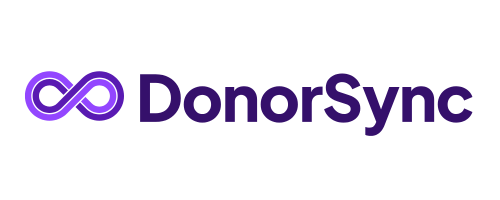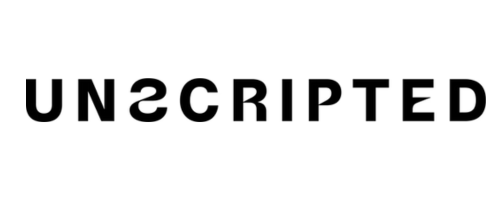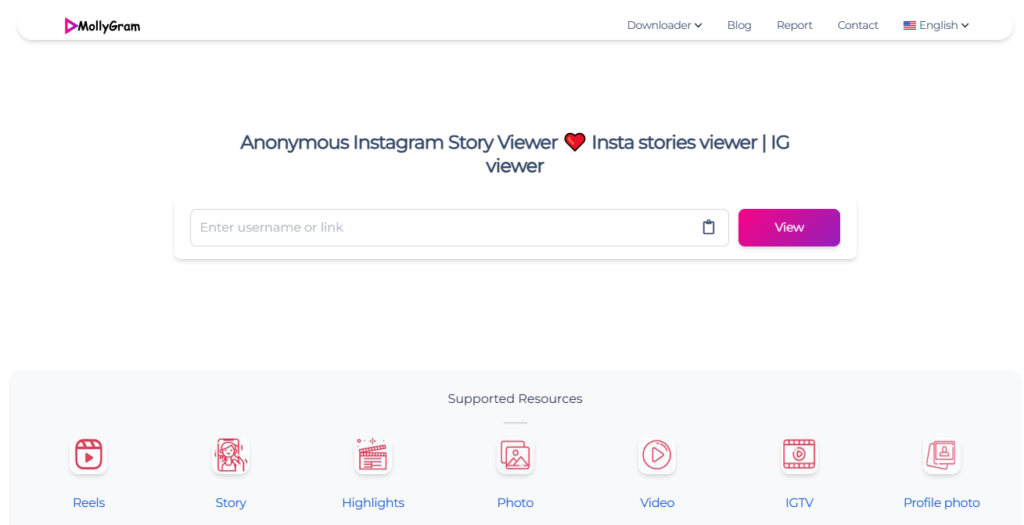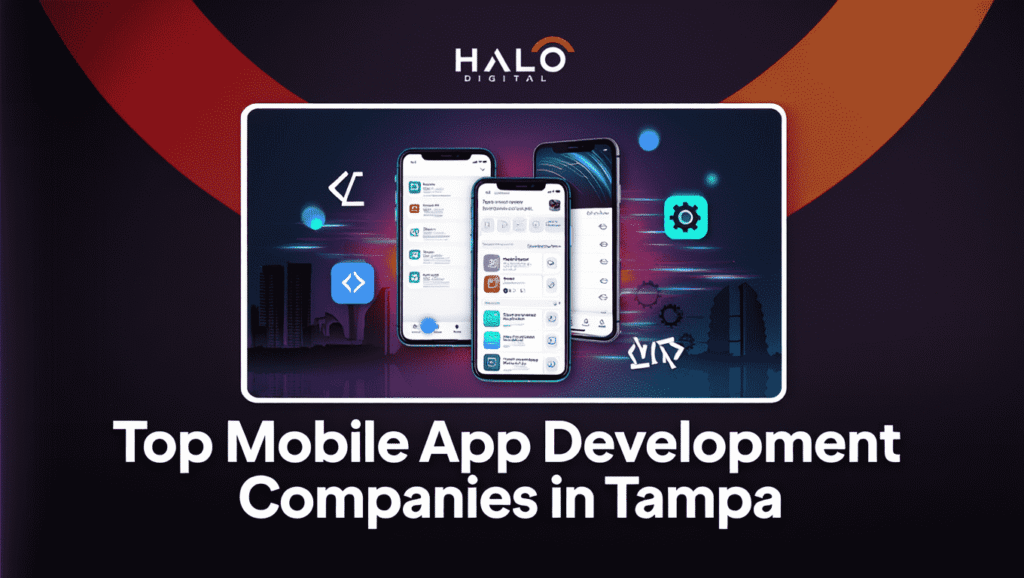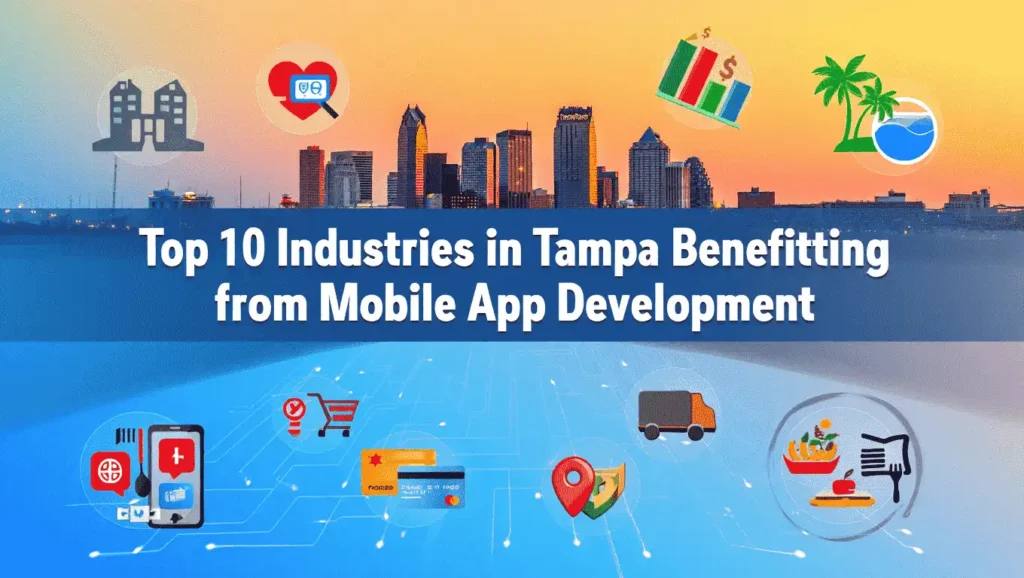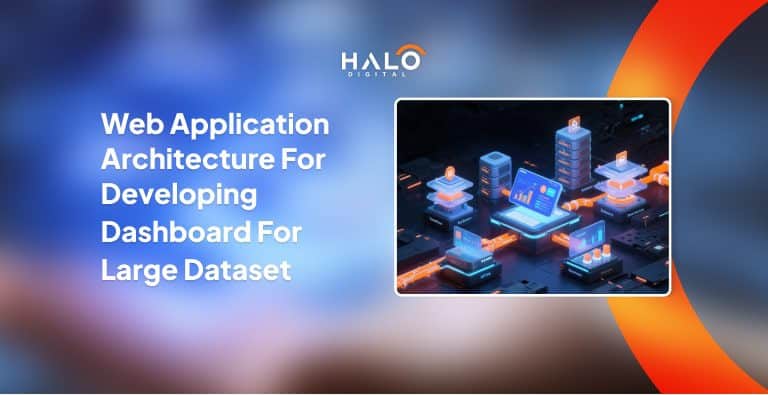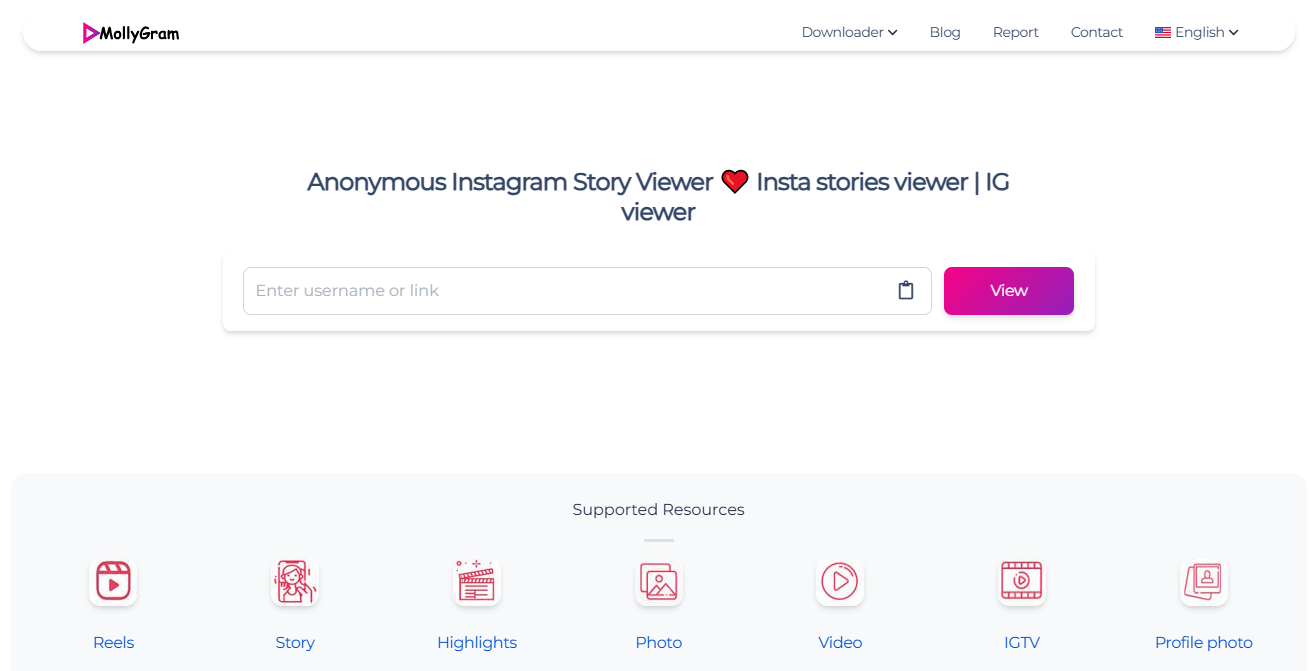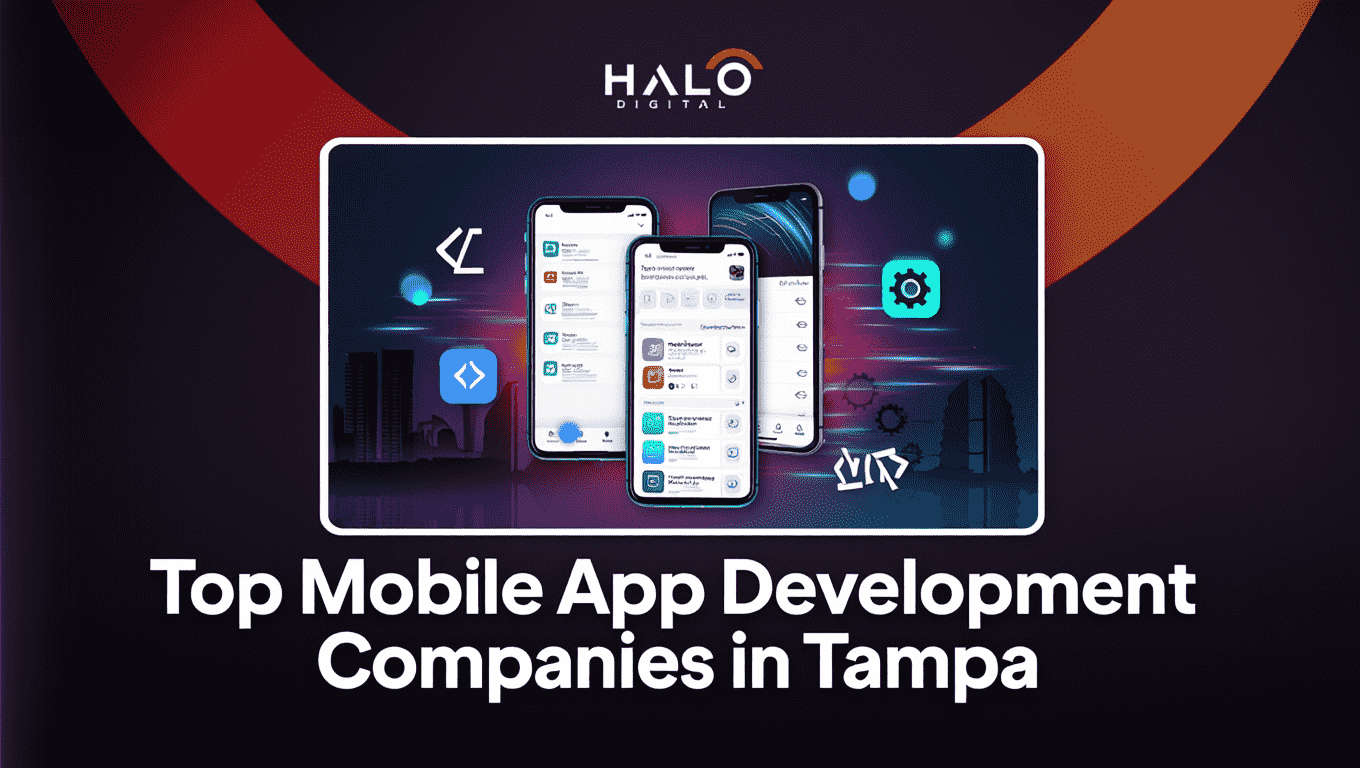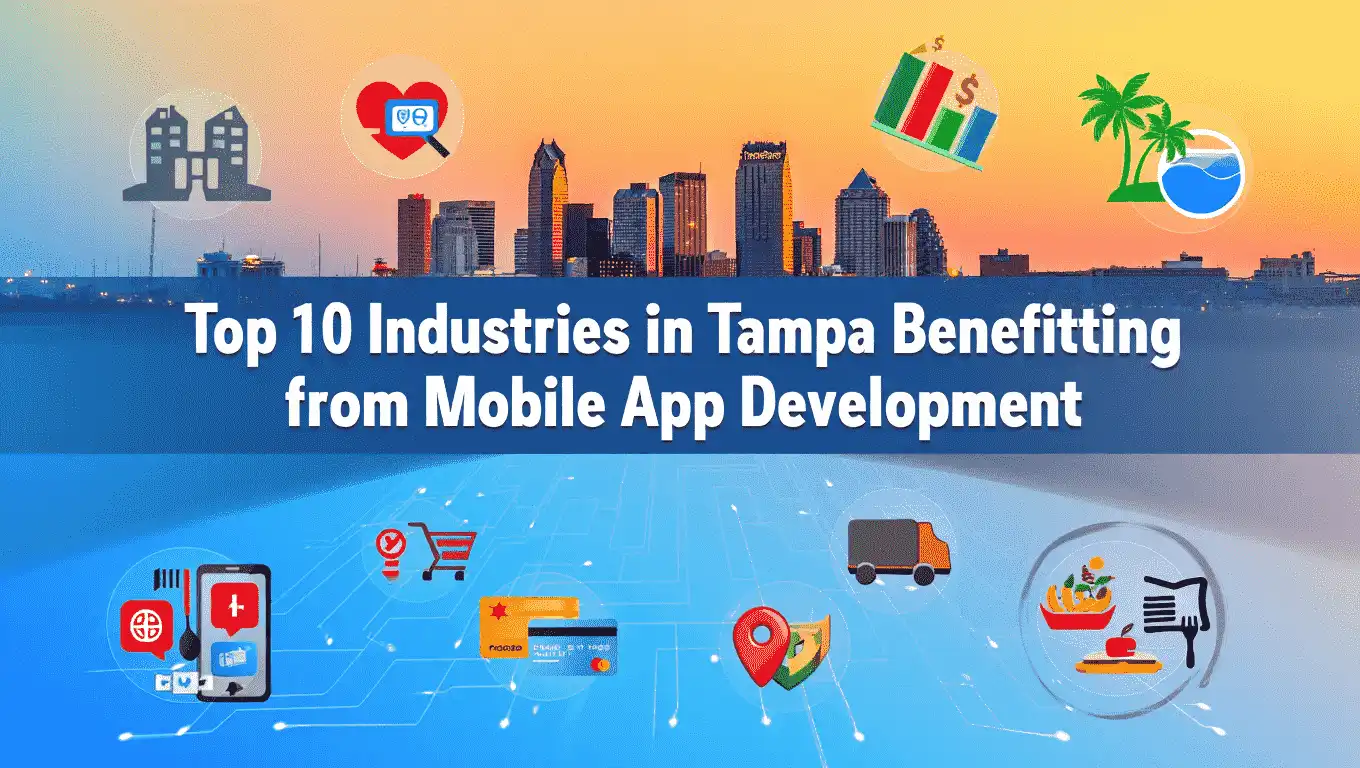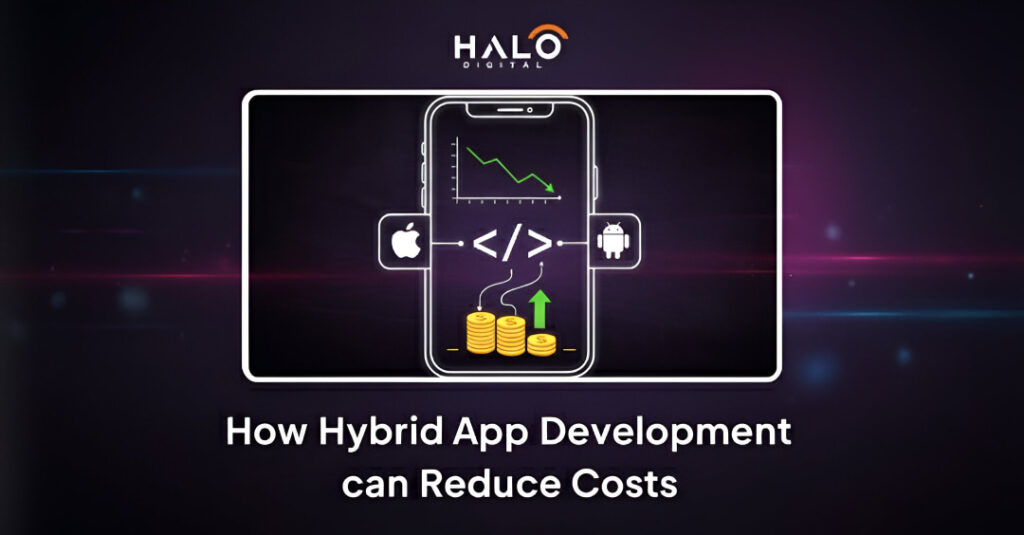Designing a dashboard for large datasets isn’t just about visual appeal — it’s about building a robust web application architecture that ensures speed, scalability, and usability.
With data growing exponentially, traditional UI patterns and back-end setups fall short.
A poorly architected dashboard can result in slow load times, data bottlenecks, and frustrated users.
In this blog, we’ll explore 10 essential architecture tips that will help you create dashboards capable of handling big data efficiently.
Whether you’re a developer or a CTO, these insights will guide you toward building high-performing, user-focused dashboards for today’s data-heavy applications.
10 Proven Architecture Tips for Building Scalable Web Dashboards for Large Datasets
1. Design for the End User First
Designing a dashboard for a large-scale application with the user in mind ensures a more intuitive, actionable experience, capable of handling extensive data without compromising performance.
Start by defining user personas to understand their needs, goals, and technical capabilities.
Conduct user research to map out common workflows and pain points.
This approach helps prioritize features that matter most, optimizing the user journey.
By understanding the user’s interaction patterns, dashboards can be tailored to display the most relevant information at a glance, minimizing cognitive overload.
Focus on delivering clear, easily interpretable insights through clean UI design, ensuring that users can make data-driven decisions with minimal friction.
A user-centered design not only enhances experience but also drives user engagement and satisfaction.
2. Choose the Right Frontend-Backend Communication Model
Selecting the right communication model between the frontend and backend is crucial for performance in an enterprise application, where high user demands and data integrity are key.
For highly dynamic data, WebSockets provide real-time two-way communication, ideal for dashboards that require constant updates, such as live monitoring.
For more structured data with specific queries, REST APIs offer a flexible, stateless communication model, perfect for traditional CRUD operations.
Alternatively, GraphQL is suited for complex, nested data structures as it allows clients to request only the data they need, reducing unnecessary bandwidth usage.
Each model has its use case — balancing freshness of data, performance, and server load ensures optimal backend efficiency and seamless frontend integration.
Communication Model | Pros | Cons | Ideal Use Case |
WebSockets | Real-time, two-way communication | Complex to implement | Live data dashboards, monitoring |
REST APIs | Simple, widely used, stateless, flexible | Over-fetching of data, slower for dynamic data | CRUD operations, traditional apps |
GraphQL | Efficient data fetching, reduces bandwidth | Complex to set up, overkill for simple apps | Complex queries, hierarchical data |
3. Use Scalable Data Storage Systems
Choosing the right data storage system is critical for managing a data visualization dashboard, ensuring quick access and processing of large datasets for real-time insights.
For relational data that requires ACID compliance, SQL databases like PostgreSQL or MySQL offer robust data integrity and complex querying capabilities.
NoSQL databases like MongoDB and Cassandra offer flexible, schema-less storage solutions that integrate seamlessly with AWS services, making them ideal for handling large volumes of unstructured or semi-structured data at scale.
Time-Series databases like InfluxDB are built to handle high-frequency, time-dependent data, often used in analytics dashboards.
Cloud-based storage solutions like Amazon RDS or Google BigQuery can automatically scale with your needs, providing high availability and reducing operational overhead while maintaining performance for big data operations.
Database Type | Strengths | Best Use Case | Examples |
SQL | ACID compliance, structured data, complex queries | Relational data, transactional systems | PostgreSQL, MySQL, Microsoft SQL |
NoSQL | Flexible schema, scalable, handles unstructured data | High-volume, schema-less data, rapid growth | MongoDB, Cassandra, DynamoDB |
Time-Series | Optimized for time-stamped data, fast writes | Real-time analytics, IoT, sensor data | InfluxDB, TimescaleDB |
4. Apply Smart Data Loading Techniques
Optimizing data loading is essential for ensuring dashboards perform smoothly despite handling large datasets.
Lazy loading delays the loading of non-essential elements until they are needed, reducing the initial load time and enhancing user experience.
Pagination divides data into manageable chunks, making it easier to process and display without overwhelming the system.
Infinite scroll is another effective technique, dynamically loading data as users scroll through, providing a seamless browsing experience.
Additionally, data preloading and caching strategies ensure that the most frequently used data is readily available, reducing server load and enhancing responsiveness.
These smart loading techniques ensure a faster, more efficient dashboard that scales with user demand.
5. Optimize the Visualization Layer for Performance
Data visualization plays a crucial role in transforming raw numbers into meaningful insights.
To ensure performance, focus on using essential chart types that provide the most insight without unnecessary visual clutter.
Dashboard examples like Google Analytics use techniques such as data preloading and on-demand rendering to ensure only critical visuals load first, improving user experience.
In dashboard design, interaction-based loading ensures complex visuals are only rendered when a user interacts with the data, enhancing performance and usability.
Chart optimization involves reducing the number of data points to display at once, improving render times while still maintaining clarity.
Implementing efficient visualization techniques ensures that your dashboard remains user-friendly, fast, and responsive even with vast amounts of data.
6. Structure the UI for Data Hierarchy and Accessibility
Effective data presentation begins with a well-organized user interface (UI).
F-patterns guide users’ eyes toward the most important content, ensuring that high-priority data stands out.
Visual weight and contrast play a key role in directing attention to vital KPIs, making them easier to find at a glance.
Accessibility should also be a priority: ensure keyboard navigation support for users with disabilities, complying with WCAG (Web Content Accessibility Guidelines).
A responsive design that maintains clear visual hierarchy across various screen sizes is crucial for a consistent user experience.
By focusing on hierarchy and accessibility, you can create a more efficient and inclusive dashboard that serves a wider audience effectively.
7. Implement Progressive Disclosure to Avoid Clutter
A key to managing large datasets is to avoid overwhelming users with too much information at once.
Progressive disclosure presents data incrementally, starting with high-level insights, such as KPIs, and offering deeper, more detailed views as needed.
This strategy reduces cognitive overload, allowing users to focus on what matters most before delving into more granular details.
Using a diagram to illustrate progressive disclosure, techniques like accordion menus, tabs, or tooltips allow users to ‘drill down’ into data at their own pace.
With this approach, users can easily navigate through the data without feeling overwhelmed, leading to a smoother experience and better decision-making.
8. Build with Real-Time Data in Mind
Real-time data is often essential for dashboards that track performance metrics, user activity, or system health.
WebSockets provide efficient, real-time, bi-directional communication, perfect for live updates without reloading the entire page.
For dashboards where continuous data updates are necessary, polling fallback ensures the system stays current by periodically requesting fresh data.
Utilizing async queues helps to manage high data throughput and optimize load times, preventing system slowdowns during heavy traffic periods.
Real-time data architecture keeps users up-to-date with live information, enhancing engagement and allowing for timely decision-making.
9. Plan Architecture for Maintainability and Extensibility
Designing a dashboard that can evolve with your business requires a focus on maintainability and extensibility.
Implementing strong software architecture with a modular codebase allows easy updates and feature additions, ensuring that your dashboard scales as your business grows.
Feature flags allow developers to enable or disable specific features without redeploying the entire system, reducing downtime.
Adopting a component-based design allows for the reuse of UI elements and code across the system, speeding up development and improving consistency.
With the right architecture in place, your dashboard can grow alongside your business, easily incorporating new data sources and user requirements.
10. Secure Data at Every Layer of Your Architecture
Data security is paramount when dealing with large datasets, particularly sensitive information.
Implement Role-Based Access Control (RBAC) to ensure that only authorized users can view or modify certain data.
Data encryption protects both data in transit and at rest, ensuring that even if data is intercepted, it remains unreadable.
Follow API security best practices, including using OAuth for authentication, applying rate-limiting to prevent abuse, and implementing proper validation to guard against SQL injection and other attacks.
By securing data at every layer, you can build a resilient and trusted dashboard that protects both user information and business assets.
Partnering with Halo Digital for Web Application Development
Building a robust, scalable web dashboard requires expertise in both design and technical architecture.
Partnering with a skilled web application development company in Baton Rouge, like Halo Digital, ensures your dashboard is built with both performance and security in mind.
Halo Digital’s experienced team can assist with developing a customized solution that prioritizes your users’ needs, implements real-time data handling, and creates a sustainable architecture for future growth.
By leveraging our expertise, you can focus on business growth, knowing that your dashboard is built on solid, scalable foundations.
FAQs
What is the recommended way to display a large dataset?
To effectively display large datasets, implement techniques like pagination, infinite scrolling, and lazy loading. These methods enhance performance by loading data incrementally, reducing initial load times, and improving user experience. Additionally, data aggregation and visualization tools can help summarize and present data in an easily digestible format.
What is the common application architecture for web applications?
Common web application architectures include:
- Monolithic Architecture: A single, unified codebase where all components are interconnected.
- Microservices Architecture: Decomposes applications into smaller, independent services that communicate over APIs.
- Serverless Architecture: Utilizes cloud services to run code without managing servers, offering scalability and cost efficiency.
How to create a real-time dashboard?
To create a real-time dashboard:
Data Streaming: Use technologies like WebSockets or Server-Sent Events (SSE) to stream data in real-time.
Backend Processing: Implement backend services that process and push updates to the frontend.
Frontend Updates: Utilize JavaScript frameworks (e.g., React, Vue.js) to dynamically update the dashboard UI without reloading the page.
What is a web application dashboard?
A web application dashboard is a user interface that visually presents key metrics and data insights in a consolidated view. It typically includes elements like charts, graphs, and tables to help users monitor performance, track KPIs, and make informed decisions. Dashboards are widely used in business analytics, monitoring systems, and administrative interfaces.
Conclusion – Web Application Architecture For Developing Dashboard For Large Dataset
Building a web dashboard for large datasets is a challenging yet rewarding process.
By focusing on the end user, choosing the right communication models, and ensuring the architecture is scalable and secure, you can create a solution that grows with your business.
Remember, it’s not just about storing data but presenting it in a way that makes it actionable and insightful.
With the right approach, including progressive disclosure and real-time updates, your dashboard will not only meet your current needs but also adapt to future demands.
Partnering with experts can help turn your vision into a successful, robust dashboard.
Top 10 Self-Hostable Open Source Web Applications
Category | Application | Key Features |
Content Management Systems | WordPress | Flexibility, Plugins, Community Support |
Drupal | Security, Scalability, Deep Customization | |
Project Management Tools | Taiga | Agile Project Management, Sprint Planning, Backlog Management |
Kanboard | Lightweight Kanban Board, Task Tracking | |
Communication Platforms | Rocket.Chat | Real-Time Messaging, Secure Video Conferencing |
Mattermost | Secure, Private Messaging, Integration Features | |
Productivity & Collaboration | Nextcloud | Self-Hosted Cloud Storage, Document Collaboration, Calendar Sync |
Data Visualization & Analytics | Grafana | Interactive Dashboards, Customizable Visualizations, Deep Analytics |
Home Automation | Home Assistant | Local Control, Privacy-Focused Automation, 2500+ Integrations |
Media Streaming | Jellyfin | Private Media Server, Streaming without Cloud Dependency |
Ghost | Self-Hosted Blogging Platform | |
Documentation Platforms | BookStack | Open-Source Documentation Platform |
Team Communication | Zulip | Team Chat Platform with Email-Style Threading |
Content Management Systems (CMS)
When managing your content, flexibility and control are often at odds with vendor lock-in and rising subscription fees. Self-hosted CMS solutions like WordPress and Drupal address this balance, giving you control over your website’s design, functionality, and data, without the long-term costs of SaaS providers.
1. WordPress: Flexibility, Plugins, Community Support
WordPress is one of the most widely used CMS platforms due to its user-friendly interface and massive ecosystem. It offers significant advantages for businesses of all sizes:
- Flexibility: Whether you’re building a simple blog, a corporate website, or an e-commerce store, WordPress can adapt to your needs. It’s incredibly versatile with thousands of themes and plugins that allow for quick customization.
- Plugins & Integrations: The WordPress Plugin Directory offers a vast selection of tools for SEO, analytics, security, and more. Want to add a booking system, or integrate payment gateways like Stripe or PayPal? There’s a plugin for almost everything, reducing the time and cost involved in custom development.
- Community Support: WordPress has one of the largest online communities, meaning you can easily find support, troubleshooting tips, and third-party services. This is invaluable for teams that lack in-house technical expertise.
- Cost-Effective: Since it’s open-source, you avoid high licensing fees, and the overall cost of running a WordPress site is relatively low, especially if you handle hosting and management in-house.
However, WordPress isn’t without its challenges:
- Security: As the most popular CMS, it’s a target for hackers. But self-hosting gives you the ability to implement your own security protocols and ensure your site remains secure.
- Scalability: As your website grows, you may encounter performance issues. Hosting WordPress on your own infrastructure allows you to scale resources as needed, ensuring smooth performance even during traffic spikes.
Looking to Build a Robust Ecommerce Platform?
If you’re considering a CMS like WordPress or Drupal for your online store, Halo Digital can help. We specialize in ecommerce development solutions, ensuring your website is secure, scalable, and optimized for performance. Let us guide you in creating a seamless, user-friendly shopping experience for your customers. Reach out to learn more about how we can support your business growth.
2. Drupal: Security, Scalability, Deep Customization
For businesses that require more robust security or more complex functionality, Drupal offers an ideal solution. Known for its security features and scalability, Drupal is often used by government agencies, universities, and large enterprises. Here’s why:
- Security: Drupal has a strong reputation for security, with a dedicated security team that releases regular updates and patches. It’s a great choice for businesses handling sensitive data, like financial institutions or healthcare providers.
- Scalability: Drupal can manage high-traffic websites and large amounts of content with ease. It’s designed for scalability, which means you can expand your site as your business grows, without performance issues.
- Customization: If you need deep customization, Drupal provides the flexibility to adjust everything from content types to user roles and permissions. Its modular system allows you to build a highly tailored CMS that fits your specific business needs.
- Multi-Language & Multisite Support: Drupal is built for complex environments, offering built-in support for multiple languages and the ability to manage several websites from a single installation. This is useful for global businesses or companies with a broad range of services.
- Long-Term Support: As a stable, well-supported platform, Drupal is ideal for businesses looking for a CMS that can grow with them over time. While it requires more technical expertise than WordPress, the power and flexibility it offers make it worth the investment.
Project Management Tools
3. Taiga: Agile Project Management, Sprint Planning, Backlog Management
For organizations struggling with managing agile projects across cross-functional teams, Taiga offers a comprehensive solution. It’s an open-source project management platform designed to support both Scrum and Kanban methodologies.
Key Features:
- Sprint Planning & Backlog Management: Taiga provides intuitive interfaces for managing product backlogs, sprint planning, and task assignments, facilitating seamless agile workflows.
- Customizable Workflows: Teams can tailor workflows to match their specific processes, ensuring flexibility and adaptability.
- Kanban Boards: Visualize work in progress with customizable Kanban boards, aiding in workflow optimization and bottleneck identification.
- User Roles & Permissions: Define roles and set permissions to control access and maintain project integrity.
4. Kanboard: Lightweight Kanban Board, Task Tracking
For teams seeking a minimalist yet powerful project management tool, Kanboard offers a lightweight solution focused on simplicity and efficiency.
Key Features:
- Task Management: Create tasks with sub-tasks, set priorities, assign users, and track progress through customizable Kanban boards.
- Automation: Implement automatic actions to streamline repetitive tasks, such as moving tasks between columns or sending notifications.
- Time Tracking & Analytics: Monitor time spent on tasks and analyze project performance with built-in analytics tools.
- Integration Capabilities: Extend functionality through plugins and integrations with other tools and services.
Communication Platforms
5. Rocket.Chat: Real-Time Messaging, Secure Video Conferencing
Teams today are tired of handing over sensitive conversations to third-party platforms they don’t fully control. That’s where Rocket.Chat comes in. It gives you the freedom to host your own messaging system, keeping everything from client discussions to internal decisions—secure and private. You get group chats, video calls, file sharing, and even integrations with tools like GitHub or Jira, all under one roof.
Key Features:
- Real-Time Chat: Facilitate instant communication through direct messages, group chats, and channels.
- Video Conferencing: Conduct secure video meetings with integrated conferencing capabilities.
- Customization & Integrations: Tailor the platform to your needs with custom integrations and plugins.
- Data Privacy: Maintain control over your data with self-hosted deployments, ensuring compliance with privacy regulations.
6. Mattermost: Secure, Private Messaging, Integration Features
For organizations needing a secure, self-hosted communication platform, Mattermost offers a secure and extensible solution.
Key Features:
- Persistent Messaging: Engage in continuous conversations with persistent chat channels, supporting team collaboration.
- Workflow Automation: Automate routine tasks and integrate with existing tools to streamline operations.
- Security & Compliance: Meet stringent security requirements with features designed for compliance with industry standards.
- Extensibility: Customize the platform through a rich ecosystem of plugins and integrations.
Productivity and Collaboration Tools
7. Nextcloud: Self-Hosted Cloud Storage, Document Collaboration, Calendar Sync
Managing files, calendars, and collaborative documents across multiple platforms can lead to inefficiencies and security concerns. Nextcloud offers a unified, self-hosted solution that empowers organizations to regain control over their data and streamline collaboration.
Key Features:
- File Storage & Sharing: Securely store and share files with granular access controls, ensuring sensitive data remains protected.
- Real-Time Collaboration: Collaborate on documents in real-time using integrated office tools, enhancing team productivity.
- Calendar & Contact Sync: Synchronize calendars and contacts across devices, facilitating seamless scheduling and communication.
- Integrated Communication: Utilize Nextcloud Talk for secure audio/video conferencing and chat, reducing reliance on third-party services.
Data Visualization and Analytics
8. Grafana: Interactive Dashboards, Customizable Visualizations, Deep Analytics
Organizations often grapple with disparate data sources and lack of visibility into key metrics. Grafana addresses this by providing a centralized platform for data visualization and monitoring.
Key Features:
- Custom Dashboards: Create interactive dashboards tailored to specific metrics and KPIs, facilitating data-driven decisions.
- Multi-Source Integration: Aggregate data from various sources like Prometheus, InfluxDB, and MySQL for comprehensive analysis.
- Alerting Mechanisms: Set up alerts to proactively address anomalies, ensuring system reliability.
- User Access Control: Manage user permissions to maintain data integrity and security.
Home Automation
9. Home Assistant: Local Control, Privacy-Focused Automation, 2500+ Integrations
The proliferation of smart devices can lead to fragmented control systems and privacy concerns. Home Assistant offers a cohesive, privacy-centric solution for home and office automation.
Key Features:
- Local Control: Operate devices without relying on cloud services, ensuring faster response times and enhanced privacy.
- Extensive Integrations: Supports over 3,100 integrations, allowing seamless connectivity with a wide range of devices and platforms.
- Custom Automations: Design tailored automation scripts to suit specific needs, from energy management to security protocols.
- Voice Control: Utilize the Home Assistant Voice Preview Edition for local voice command capabilities, enhancing user convenience.
Media Streaming
10. Jellyfin: Private Media Server, Streaming without Cloud Dependency
If your team needs to manage and stream media assets—training videos, product demos, recorded webinars—Jellyfin offers a self-hosted, open-source alternative to cloud-heavy services. You get full control over your files, no subscriptions, and no tracking.
It’s especially useful for teams dealing with IP-sensitive media or working in industries where data compliance matters. One of our clients, a creative agency, used Jellyfin to centralize media resources for internal collaboration—no more scattered Google Drive links or third-party bloat.
Key features:
- Stream video, music, and TV libraries on any device
- No cloud dependency or subscription cost
- User permission control and metadata management
Ghost: Self-Hosted Blogging Platform
For brands that want a clean, fast, and customizable publishing platform without being tied to WordPress plugins or bloat, Ghost is a standout choice. It’s lightweight, open-source, and geared towards modern content delivery.
Perfect for product announcements, thought leadership, and even newsletters.
If you’re tired of WordPress’s patch-heavy setup, Ghost’s Markdown-first approach and built-in SEO features might be a breath of fresh air.
Why teams love it:
- Sleek publishing experience with minimal maintenance
- Built-in newsletter and membership capabilities
- Fast-loading by design, with full theme control
BookStack: Open-Source Documentation Platform
Keeping internal documentation updated and easy to find is a challenge for scaling teams. BookStack makes it easier.
It’s an open-source, self-hosted wiki-style platform where your team can write, store, and organize documentation without relying on external services like Notion or Confluence.
One product team we worked with used BookStack to structure onboarding docs and SOPs—it kept everything in one place, searchable, and versioned.
Best for:
- Internal knowledge bases and SOPs
- Team onboarding documentation
- Lightweight and searchable docs, organized into books and chapters
Zulip: Team Chat Platform with Email-Style Threading
If your team struggles with noisy group chats or lost context in fast-paced Slack channels, Zulip offers a smarter take.
It blends real-time chat with topic-based threading, so conversations stay organized. Ideal for remote or async teams that juggle multiple discussions at once.
At Halo, we’ve recommended Zulip for developer teams who want a calmer, more searchable communication flow without giving up speed.
What sets it apart:
- Asynchronous-friendly with topic threads
- Integrates with GitHub, Jenkins, Jira, and more
- Full self-hosting support and strong API flexibility
Choosing the Right Self-Hosted Application: What to Consider
Not every tool fits every team, and going the self-hosted route means thinking beyond just features. Before jumping in, it’s important to weigh a few real-world factors that can impact long-term success:
Scalability Needs
Ask yourself: will this tool still serve you well when your team doubles—or when usage grows across departments? Some self-hosted apps handle scale better than others. Tools like NextCloud and Rocket.Chat are designed to grow with you, but lighter tools like Kanboard might be better for smaller, more focused teams.
Community and Developer Support
A healthy open-source ecosystem means faster bug fixes, regular updates, and a community to lean on. That’s why we often recommend tools like Ghost or Grafana—they’re backed by strong dev activity, so you’re not left solving everything alone.
Security Updates and Maintenance
Self-hosting means you’re in charge of security patches, backups, and system health. It’s not a blocker—it just requires process. At Halo Digital, we’ve helped teams automate updates and set up alerting systems so these apps stay secure without becoming a full-time job.
Resource Requirements (Server, Storage, Bandwidth)
Some platforms are lean, others are resource-hungry. Jellyfin, for example, needs decent bandwidth for media streaming. Make sure your infrastructure matches your ambitions—or work with a partner like us to size and set it up properly.
Challenges of Open Source Frontend Developer Self Hosting
Self-hosting brings control, but it comes with responsibility. Being upfront about the trade-offs helps teams plan smarter.
Initial Setup Complexity
Unlike SaaS tools, these platforms require a proper setup—hosting environment, domain, SSL, maybe Docker containers. It’s nothing unmanageable, but it does need technical time. We often step in here for teams who want it up and running quickly and cleanly.
Ongoing Maintenance Responsibilities
You own the stack, so you also own updates, performance tuning, and uptime monitoring. A good devops process helps here—and there are plenty of automation tools that can lighten the load.
Security Management
You’re now responsible for keeping everything patched and secure. That can feel like a lot, especially if you’re running multiple apps. But with the right tools and alerts (like Grafana + Prometheus for monitoring), it’s very doable.
Backup and Disaster Recovery
Stuff breaks—it’s reality. Having a reliable backup and restore plan is essential. Whether you’re self-hosting BookStack or NextCloud, daily backups and testing recovery processes are just good practice. We usually recommend automating this part from day one.
Future Trends in Self-Hosted Applications
The shift toward open-source and self-hosted tools isn’t slowing down—it’s accelerating, especially in privacy-conscious industries and scaling tech teams. Here’s where things are heading:
- Low-code and no-code self-hosted platforms are on the rise, helping non-dev teams build internal tools without giving up data control. We’re seeing more interest in combining platforms like Directus or Budibase with internal APIs.
- Self-hosted frontend frameworks and open source frontend tools are becoming viable alternatives to cloud IDEs—especially for orgs building in regulated sectors.
- Tools that fit well into modern frontend development environments are getting traction—especially those that play nicely with Git, Docker, and CI/CD pipelines.
We’ve had clients move away from fragmented SaaS stacks toward self-hosted solutions just to regain control, reduce spend, and simplify compliance—and we expect that trend to continue.
Take Control of Your Self-Hosting with Halo Digital
Halo Digital is here to help businesses like yours seamlessly implement self-hosted solutions. Whether you need website design services, web development services, mobile app development services, or DevOps services, we can support you in building a flexible and secure infrastructure that grows with your business.
FAQs
What is self-hosting and why should businesses consider it?
Self-hosting allows businesses to manage their own applications and data, offering more control, flexibility, and privacy compared to third-party services.
Are self-hosted open-source applications secure?
Yes, they can be secure if properly configured and maintained. Regular updates, backups, and security best practices are key to ensuring safety.
What are the benefits of using open-source self-hosted tools over SaaS?
Open-source tools offer cost savings, customization options, data control, and greater scalability, which can be crucial for growing businesses.
How do I get started with self-hosting applications?
First, evaluate your business needs, choose the right tools, and set up your hosting environment. Many open-source tools offer user-friendly documentation to guide you.
What are some examples of self-hosted apps for team collaboration?
Tools like Rocket.Chat for secure messaging, NextCloud for file sharing, and Taiga for project management are popular choices for team collaboration.
Conclusion – Open Source Frontend Developer Self Hosting
More businesses are turning to self-hosted, open-source applications because they want greater control over their systems and data.
Tools like Rocket.Chat for messaging or NextCloud for file storage give you the flexibility to manage your resources in-house—no third-party involved.
Self-hosting lets you scale your operations as needed, without being limited by what a service provider can offer.
By picking the right tools, you can make your workflows more efficient, boost team collaboration, and create an infrastructure that grows with your business—all while keeping things cost-effective.
Are you ready to transform your business?
Let HALO Digital guide you on your enterprise web application development journey — combining secure architecture, seamless integrations, and scalable features. Whether you need web or mobile application development services, we’re here to help you build a future-proof platform. Contact us today to get started.
FAQs
What are the 4 major applications for enterprise applications?
Common kinds include ERPs, CRMs, platforms for BI, and SCM systems. They help streamline critical business processes through web-based integration.
What is an enterprise app developer?
Expertise in scaling web software engineering that integrates complicated business logic, backend services, and user interfaces that are reliable.
What is the difference between web development and enterprise application?
Web development is similar to an online brochure, but enterprise applications involve complicated systems and integration, scalability, and logic based on roles.
What is the difference between enterprise application and ERP?
Enterprise applications include any large-scale business software. An ERP is a distinct kind (Enterprise Resource Planning) that centralizes the essential functions.
What is an enterprise application example?
Examples include banks’ portals for banking and healthcare management systems. HR dashboards and mobile interfaces for applications.
What is another name for enterprise applications?
They can also be referred to as enterprise solutions or enterprise web software as well as enterprise-level software.
Conclusion: Enterprise Web Application Development
Modern business requires an integrated, powerful web application.
Web application development for enterprise brings efficiency, data-driven insight, and the ability to scale.
Through a well-planned development procedure, selecting the appropriate tech stack and collaborating with experts to accelerate the digital transformation.
Whether building from scratch or upgrading legacy systems, enterprise apps deliver measurable ROI, stronger internal collaboration, and future-ready architecture, helping you lead with confidence in 2025 and beyond.






